This story is part of WWDC 2022, CNET’s complete coverage from and about Apple’s annual developers conference.
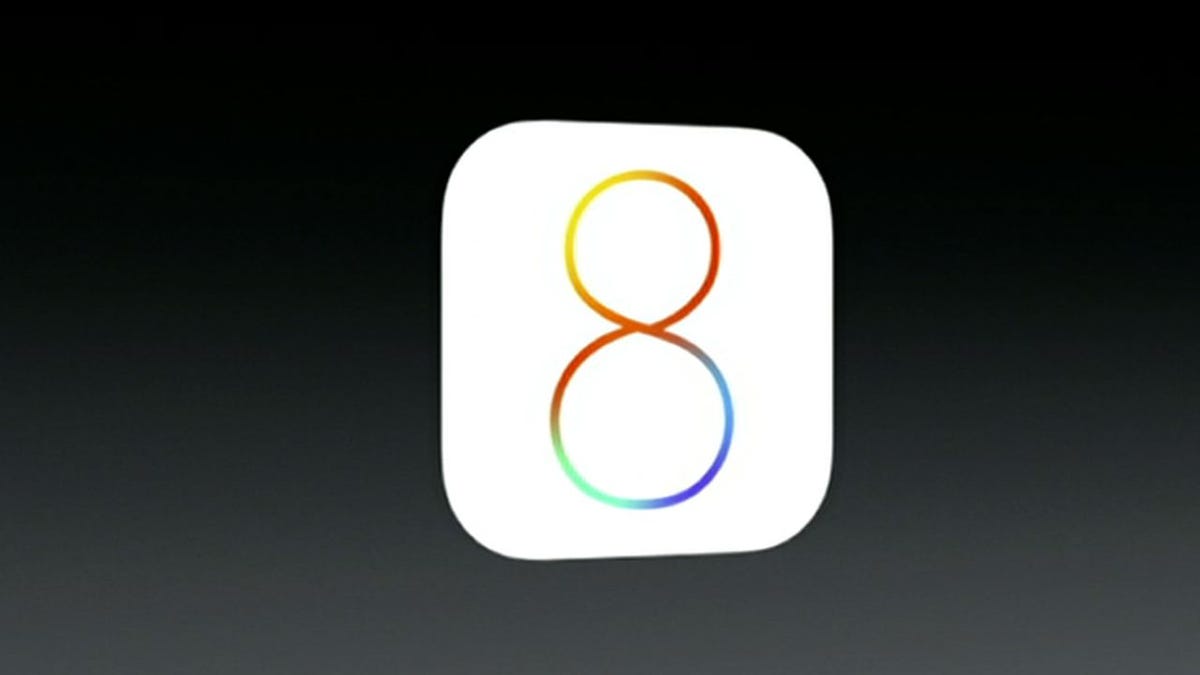
Tim Stevens/CNET
Apple on Monday unveiled the latest version of its iOS mobile operating system at its Worldwide Developers Conference in San Francisco. The company has labeled iOS 8 as “the biggest release since the launch of the App Store,” however Android fans have nothing to fear. They say imitation is the sincerest form of flattery — well, many of Apple’s “new” features are already available on Google’s operating system and have been for quite some time.
iCloud Photo Library
Apple improved cloud photo and video storage in iOS 8. Users previously were limited to storing 1,000 photos for up to 30 days. With the new iCloud Photo Library, photos are automatically stored in the cloud and can be accessed from all of your devices.
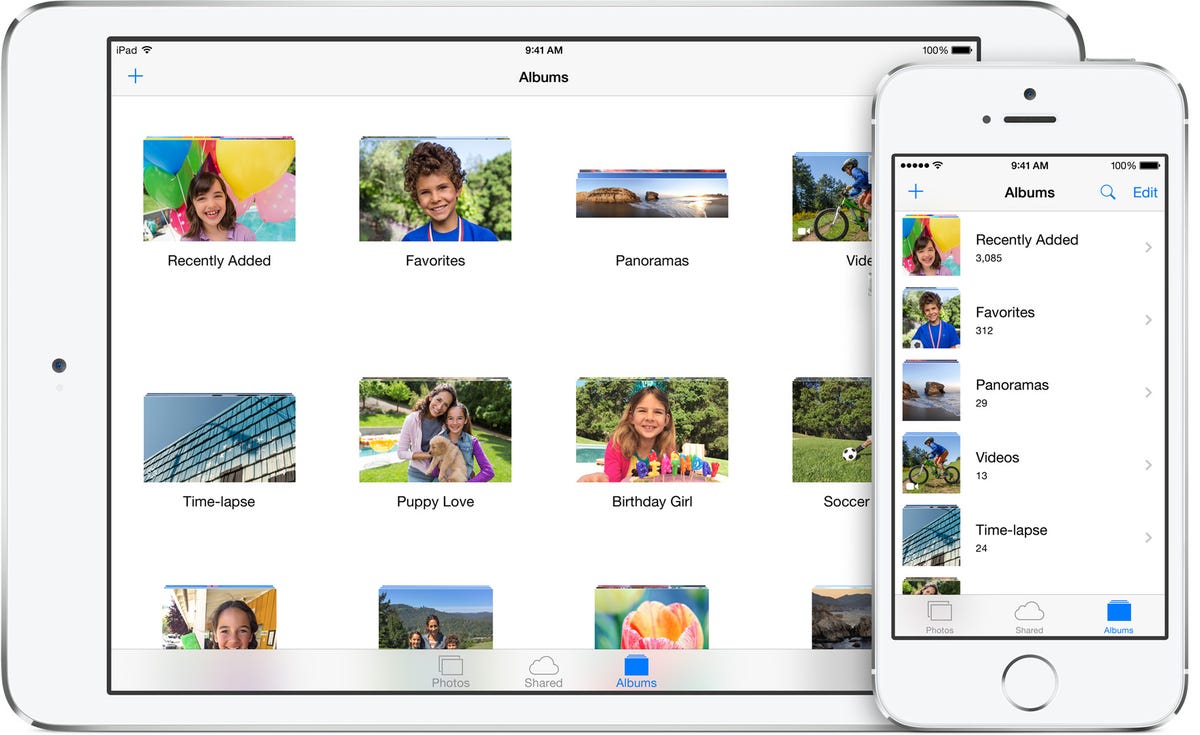

Apple
Android users have Google+ photos, which will also automatically sync all of your photos in the cloud. Unlike Apple, which only offers 5GB for free, Google gives users unlimited storage for photos and videos.
iCloud Drive
The other improvement Apple announced for iCloud was iCloud Drive, a Dropbox-like service for storing documents in the cloud. In addition to Dropbox, Android and Apple users already have Google Drive. Yet again, while iCloud is limited to 5GB of free storage, Google Drive offers 15GB for free, while Dropbox initially offers 2GB for free with the ability to earn up to 20GB for referring others.
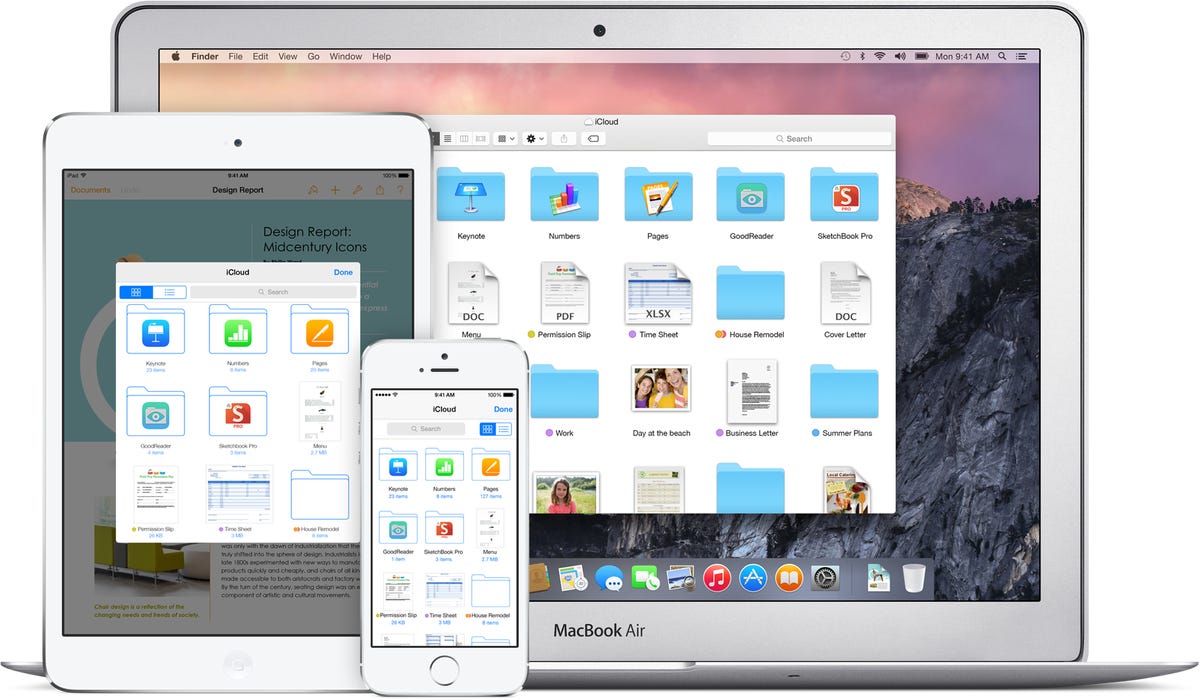

Apple
iCloud Drive will be available on iPhone, iPad, Mac, and PC, while Google Drive and Dropbox also support Android.
QuickType and third-party keyboards
Apple made a big deal about its brand new QuickType keyboard. The keyboard features predictive typing and is able to learn based on your typing habits. In addition to QuickType, iOS 8 will also bring support for third-party keyboards. This all sounds fine and dandy, but Android users have had these features for years.
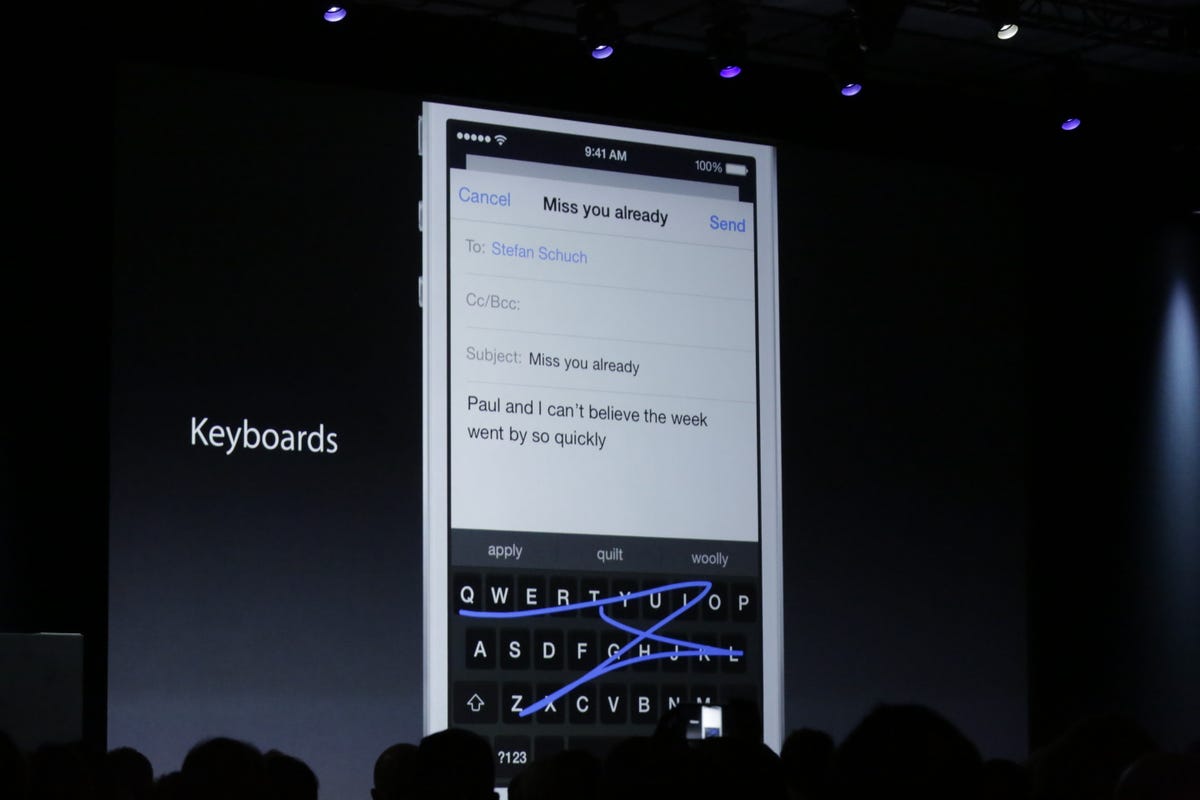

Tim Stevens/CNET
Both the official Google Keyboard and SwiftKey, another popular third-party keyboard, among many others, have predictive features, gesture typing, and more.
Widgets
Apple users will finally get access to basic widgets in iOS 8. Unlike on Android where you can place widgets on your home and lock screens, however, iOS 8 widgets will be limited to the iPhone and iPad’s pull-down Notification Center.
‘Hey Siri’
The iOS 8 update also brings improvements to Siri. Apple’s voice assistant has added 22 new dictation languages and will now be capable of song recognition with Shazam, purchasing iTunes content, and streaming voice recognition. One of the biggest changes is the ability to launch Siri by speaking the phrase “Hey Siri” when the phone is plugged into a car.
Sound familiar? Android 4.4 owners are able to launch Google Now with the phrase “OK, Google” from the phone’s home screen, while the Moto X can actually wake the phone up with the same phrase.
Interactive Notifications
iPhone and iPad users will have the ability to respond to a notification without launching an app with Interactive Notifications. Simply swipe down and quickly reply to a text message or even like a Facebook post.
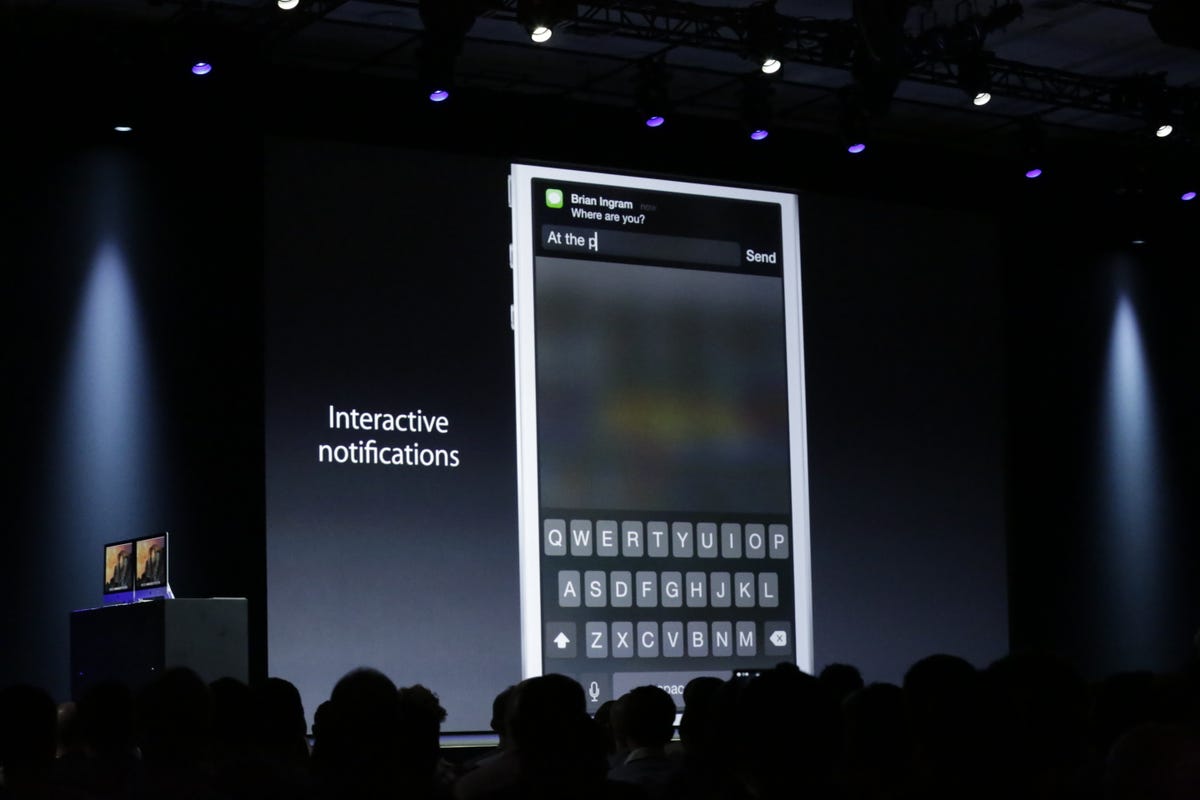

Tim Stevens/CNET
This feature is also built into Android. For example, a Gmail notification can be quickly archived in the notification menu, although the Gmail app will be opened when you attempt to respond to the message. CyanogenMod, a popular third-party Android interface, adds the ability to quickly call or respond to a text message notification.
TestFlight
TestFlight, a technology Apple acquired earlier this year, will give iPhone and iPad owners the ability to beta test apps before they are officially released in the App Store. It shouldn’t be a surprise that Google has allowed Android users to beta test apps for quite some time now.
App Previews
Another improvement to the App Store is what Apple calls “App Previews,” which gives users the ability to watch a video demo of an app before downloading it. Android developers have always had the ability to add video demos of their apps on Google Play.
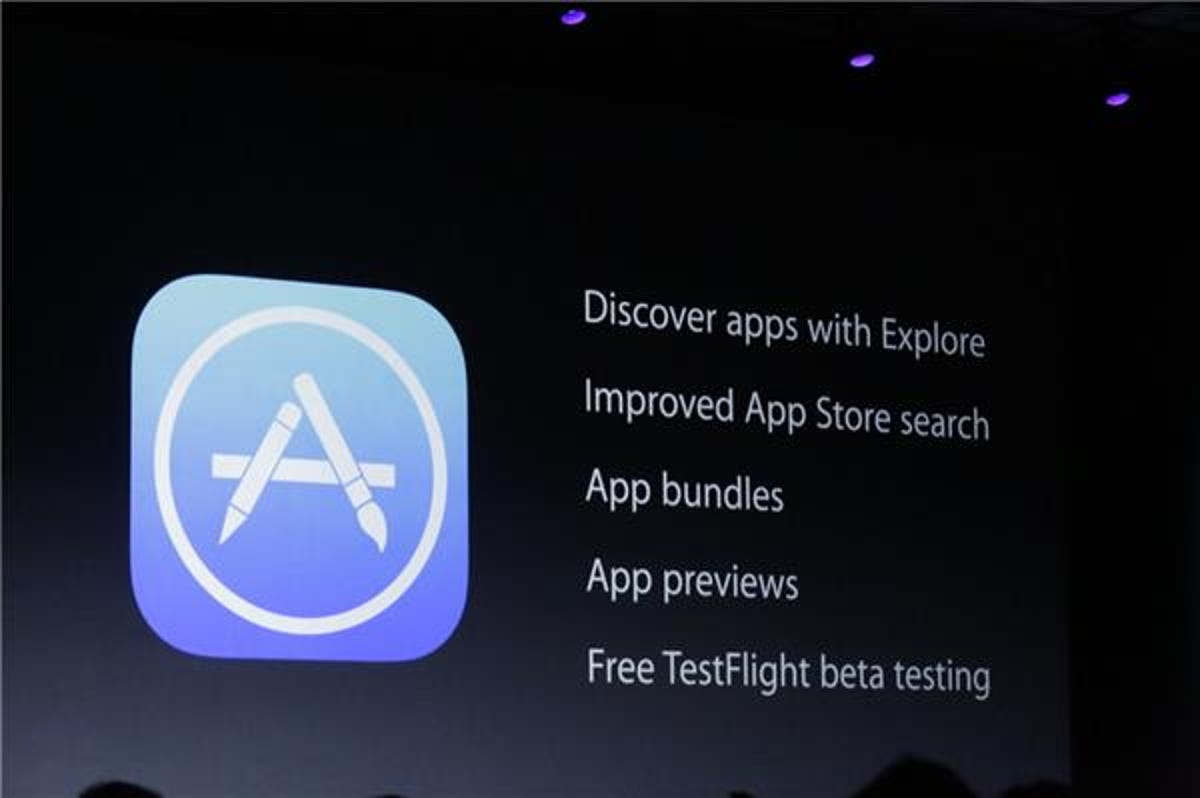

Tim Stevens/CNET
iMessage voice and video
Apple’s messaging app will also be getting an update with iOS 8. iMessage users will be able to send audio and video messages and share their location with others. Audio and video messages can also be set to self-destruct after a set time, a feature Snapchat is known for on Android and iOS. WhatsApp, another popular cross-platform messaging app, allows users to share their location with contacts and also send audio and video messages.



